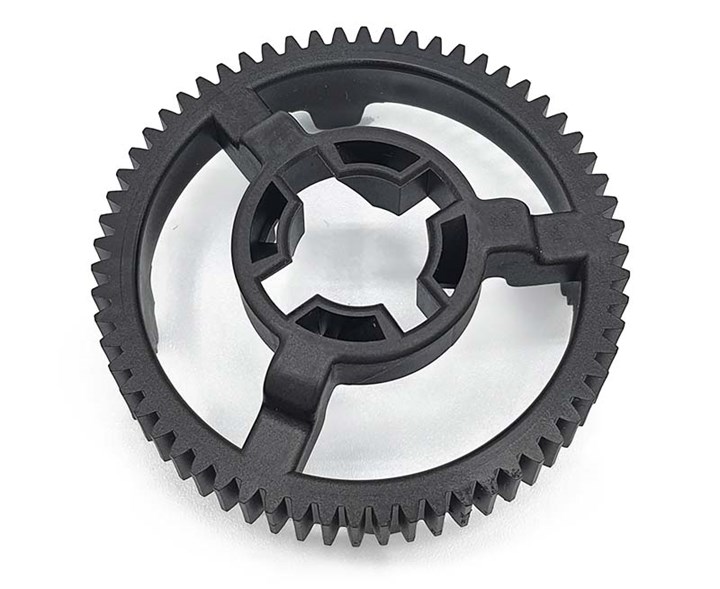Recycled Nylon-based Composite Injection Molding Material
CRP Technology announced the launch of its Windform XT 2.0 IMG, a nylon/carbon fiber composite.
CRP Technology, a supplier of additive manufacturing materials, announced the launch of its Windform XT 2.0 IMG, a nylon/carbon fiber composite.
Windform XT 2.0 IMG is made from 100% recycled Windform XT 2.0 industrial 3D printing material, with no addition of virgin material.

Injection molded front nose for Energica Electric Motorcycle.
Photo Credit: CRP Technology
Windform XT 2.0 IMG is PA12-based and carbon reinforced. According to CRP, the results of product testing of the regranulated material have yielded excellent impact resistance and aesthetic results.
By providing a material that can be processed with multiple technologies, CRP hopes to supply manufacturers who may not use additive manufacturing, or who opt for the continuity of using a material that can be processed by additive technologies or injection molding, thereby enabling a transition from prototype to production lifecycle stages without a change in material.

An example of an injection molded gear in Windform XT 2.0 IMG material.
Photo Credit: CRP Technology
“Now we are able to provide a solution of continuity to all those companies that are reluctant to 3D print prototypes or pre-series with our Windforms because they are worried not finding a similar material when they switch to industrial production,” says Franco Cevolini, CEO and technical director at CRP technology.
Related Content
-
Automotive Awards Highlight Emerging Technologies
Annual SPE Automotive event gives nods to several ‘firsts’ as well as sustainability.
-
The Recycling Collaboration That Is Making Circular Film a Reality
Nova Chemicals and Novolex are commissioning a large mechanical recycling facility for film to film.
-
Automotive Awards Highlight ‘Firsts,’ Emerging Technologies
Annual SPE event recognizes sustainability as a major theme.





